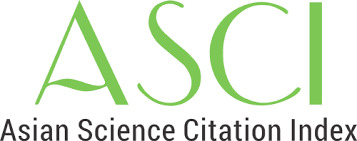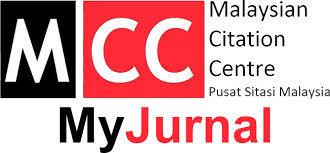TAHAP KESEDIAAN DAN PENERIMAAN GURU DALAM MEMPRAKTIKKAN PENGGUNAAN TEKNOLOGI DIGITAL RI 4.0 SEBAGAI BAHAN BANTU MENGAJAR DALAM PENDIDIKAN RENDAH
[LEVEL OF READINESS AND ACCEPTANCE OF TEACHERS IN PRACTICING THE USE OF DIGITAL TECHNOLOGY IR 4.0 AS A TEACHING AIDS IN PRIMARY EDUCATION]
Keywords:
Revolusi Industri 4.0 (4IR), bahan bantu mengajar, kesediaan guru, penerimaan guru, : Industrial Revolution 4.0 (4.0 IR), teaching aids, teacher readiness, teacher acceptanceAbstract
Abstrak: Revolusi Industri 4.0 (RI 4.0) telah membuat banyak transformasi, terutamanya kepada sistem pendidikan. Kajian ini dijalankan adalah untuk mengetahui tahap kesediaan dan penerimaan guru dalam mempraktikkan penggunaan teknologi digital RI 4.0 sebagai bahan bantu mengajar dalam pendidikan rendah. Kajian ini penting selari dengan RI 4.0. Ia memerlukan generasi baru yang berpengetahuan tinggi, mampu untuk menghadapi cabaran teknologi baru yang lebih canggih dan kompleks serta berdaya tahan bukan sahaja sebagai pengguna teknologi yang berjaya, tetapi dapat mencetuskan teknologi selaras dengan Aspirasi Murid dan Anjakan 7 dalam Pelan Pembangunan Pendidikan Malaysia 2013-2025, serta dapat menyokong Pembelajaran Abad ke-21. Kajian ini menggunakan pendekatan kuantitatif dan berbentuk tinjauan menggunakan instrumen soal selidik dalam talian yang terdiri daripada tiga bahagian, iaitu Bahagian A berkenaan demografi responden seperti jantina, umur, jenis sekolah, lokasi dan kategori sekolah, bidang pengkhususan yang diajar dan pengalaman mengajar, Bahagian B pula berkenaan tahap kesediaan guru dalam mempraktikkan penggunaan teknologi digital RI 4.0 sebagai bahan bantu mengajar dalam pendidikan rendah, dan Bahagian C berkenaan tahap penerimaan guru dalam mempraktikkan penggunaan teknologi digital RI 4.0 sebagai bahan bantu mengajar dalam pendidikan rendah. Sampel kajian terdiri daripada 81 orang guru sekolah rendah di Selangor, Negeri Sembilan dan Johor. Sampel kajian dipilih secara rawak mudah. Hasil dapatan dianalisis menggunakan analisis statistik deskriptif yang melibatkan skor min, sisihan piawai dan peratusan untuk melihat tahap kesediaan dan penerimaan guru dalam mempraktikkan penggunaan teknologi digital RI 4.0 sebagai bahan bantu mengajar. Manakala statistik inferensi melibatkan ujian Mann-Whitney U dan Graf Boxplot pada tahap kesignifikan p<0.05 menggunakan perisian Pakej Statistik untuk Sains Sosial (SPSS) IBM (versi 26). Hasil dapatan kajian mendapati tahap kesediaan dan penerimaan guru dalam mempraktikkan penggunaan teknologi digital 4.0 sebagai bahan bantu mengajar adalah pada tahap sederhana. Hasil dapatan menunjukkan tiada perbezaan yang signifikan antara tahap kesediaan guru dan penerimaan guru untuk menggunakan teknologi digital RI 4.0 sebagai bahan bantu mengajar dengan lokasi dan kategori sekolah. Implikasi kajian ini mempunyai potensi dalam membantu banyak pihak, terutamanya Pihak Kementerian Pendidikan Malaysia (KPM) untuk mengambil langkah yang sewajarnya bagi membimbing dan membantu lebih ramai guru-guru di Malaysia untuk berhadapan dengan kerancakan teknologi digital RI 4.0 yang sedang berkembang dengan pesat di seluruh dunia.
Abstract: The Industrial Revolution 4.0 (IR 4.0) has made many transformations, especially to the education system. This study was conducted to determine the level of readiness and acceptance of teachers in practicing the use of digital technology IR 4.0 as a teaching aid in primary education. This study is important in line with IR 4.0. It requires a new generation that is highly knowledgeable, able to face the challenges of new technologies that are more sophisticated and complex and resilient not only as successful users of technology, but able to trigger technology in line with Student Aspirations and Shift 7 in the Malaysian Education Blueprint 2013-2025, as well as being able to support 21st Century Learning. This study uses a quantitative and survey-based approach using an online questionnaire instrument that consists of three parts, namely Part A on the demographics of respondents such as gender, age, type of school, location and category of school, field of specialization taught and teaching experience, Part B is regarding the level of readiness of teachers in practicing the use of digital technology RI 4.0 as teaching aids in primary education, and Part C regarding the level of teacher acceptance in practicing the use of digital technology RI 4.0 as teaching aids in primary education. The study sample consisted of 81 primary school teachers in Selangor, Negeri Sembilan and Johor. The study sample was selected at simple random. The findings were analyzed using descriptive statistical analysis involving mean scores, standard deviations and percentages to see the level of readiness and acceptance of teachers in practicing the use of digital technology RI 4.0 as teaching aids. Whereas inferential statistics involved Mann-Whitney U test and Boxplot Graph at a significance level of p <0.05 using IBM’s Statistical Package for the Social Sciences (SPSS) software (version 26). The results of the study found that the level of readiness and acceptance of teachers in practicing the use of digital technology 4.0 as a teaching aid is at a moderate level. The results showed that there was no significant difference between the level of readiness of teachers and the acceptance of teachers to use digital technology RI 4.0 as teaching aids with school location and category. The implications of this study have the potential to help many parties, especially the Ministry of Education Malaysia (MOE) to take appropriate measures to guide and help more teachers in Malaysia to cope with the rapid growth of digital technology RI 4.0 around the world.
References
Abukhattala, I. 2016. The Use of Technology in Language Clasroom in Libya. International Journal of Social Science and Huminity 6(4): 262.
Abd Hamid, A. H., Simin, M. H. A., & Kamri, K. A. 2018. Implikasi Hukuman Fizikal Terhadap Anak Dalam Masyarakat Melayu Johor, Malaysia. Kelola: Jurnal Sosial Politik 1(2): 131-142.
Aida Aryani & Norhayati. 2018. Industrial Revolution 4.0 and Education. International Journal of Academic Research In Business & Social Sciences 8(9): 314-316.
Alakrash, H. M., & Razak, N. A. 2020. Towards The Education 4.0, Readiness Level of EFL Students in Utilising Technology-Enhanced Classroom. International Journal of Innovation, Creativity and Change 13(10): 161-182.
Anealka Aziz Hussin. 2018. Education 4.0 Made Simple: Ideas For Teaching. International Journal of Education & Literacy Studies 6(3): 92-98.
Davis, F.D., Bagozzi, R.P. & Warshaw, P.R. 1992. Extrinsic and Intrinsic Motivation To Use Computers in The Workplace 1. Journal of Applied Social Psychology 22(14): 111-1132.
Davis, J.H., Schoorman, F.D. & Donaldson, L. 1997. Toward A Stewardship Theory of Management. Academy of Management Review 22(1): 20-47.
Dunwill, E. 2016. 4 Changes That Will Shape The Classroom of The Future: Making Education Fully Technological. https://elearningindustry.com/4-changes-will-shape-classroom-of-the-future-making-education-fully-technological [23 Mei 2019].
Evergreen Education Group (2019). Teacher Commitment to Education Technology is Necessary.https://www.digitallearningcollab.com/blog/teacher-commitment-to-education-technology-is-necessary [31 Mei 2019].
Franscisco, M. 2018. Uncertainty and Promising Prospects: The Global Landscape of Higher Education. AACRAO, Bulls Eye Resources, World Bank 1.
Fisol, N. I. A., & Samuri, M. A. A. 2020. Perundangan Berkaitan Pendisiplinan Pelajar Sekolah Tahfiz di Malaysia. BITARA International Journal of Civilizational Studies and Human Sciences 3(1): 54-71.
Graham Brown, M. 2018. Education and The Fourth Industrial Revolution. https://medium.com/learning-re-imagined/education-and-the-fourth-industrial-revolution-cd6bcd7256a3 [20 Mei 2019].
Group Media TFO. 2017. Emergency for The World Of Education: Adapting To The Digital Revolution.https://www.groupemediatfo.org/wpcontent/uploads/2017/11/7235_tfo_livre_blanc_FR.pdf.
Haseeb, A.S.M.A. 2018. Higher Education in The Era of IR 4.0. https://www.nst.com.my/education/2018/01/323591/highereducationera-ir-40 [10 Januari 2018].
Hussien, A. & Norizan, A.R. 2018. English Language Teachers’ Readiness For The Application Of Technology Towards Fourth Industrial Revolution Demands. Asia Pacific Journal of Information Technology and Multimedia 7(22): 89-98.
Janggil, A. & Suhaimi, T. 2018. Pengaruh Kesediaan Guru Terhadap Pengurusan Bilik Darjah Abad Ke-21. Malaysian Journal of Social Sciences and Humanities 3(4): 6-22.
Kamary, N. M., & Hamzah, M. 2019. Kesediaan Guru Matematik Daerah Kuala Langat Dalam Melaksanakan Pembelajaran Abad Ke 21. In Seminar Antarabangsa Isu-Isu Pendidikan (ISPEN 2019): 110-130.
Kementerian Pendidikan Malaysia. 2015. Executive Summary Malaysian Education Blueprint 2015-2025 (Higher Education).
Muhammad Nizam, S. 2018. Revolusi industri 4.0: Suatu Pengenalan. Seranta FELDA Jabatan Perdana Menteri.
Pan World Education. 2017. Benefits of Digital Learning Over Traditional Education Methods. https://www.panworldeducation.com/2017/03/23/benefits-of-digital-learning-over-traditional-education-methods/ [31 Mei 2019].
Putri, A. R., & Muzakki, M. A. 2019. Implemetasi Kahoot Sebagai Media Pembelajaran Berbasis Digital Game Based Learning Dalam Mengahadapi Era Revolusi Industri 4.0. In Prosiding Seminar Nasional Universitas Muria Kudus: 1-7.
Qasem, A. A. A., & Viswanathappa, G. 2016. Teacher Perceptions Towards ICT Integration Professional Development Through Blended Learning. Journal of Information Technology Education: Research 11(2): 20-26.
Siti Hajar Halili, & Suguneswary. 2016. Penerimaan Guru Terhadap Penggunaan Teknologi Maklumat dan Komunikasi Berasaskan Model TAM Dalam Pengajaran Mata Pelajaran Bahasa Tamil. Jurnal Kurikulum & Pengajaran Asia Pasifik 4(2): 31-41.
Schwab Klaus. 2016. The Fourth Industrial Revolution. Switzerland: World Economic Forum.
Sun, Y., Strobel, J., & Newby, T. J. 2017. The Impact of Student Teaching Experience on Pre- Service Teachers’ Readiness for Technology Integration: A Mixed Methods Study With Growth Curve Modeling. Educational Technology Research and Development 65(3): 597-629.













